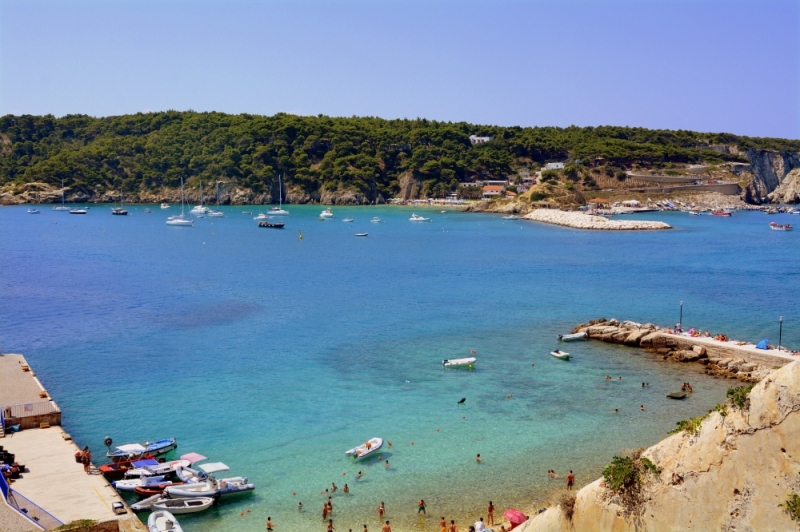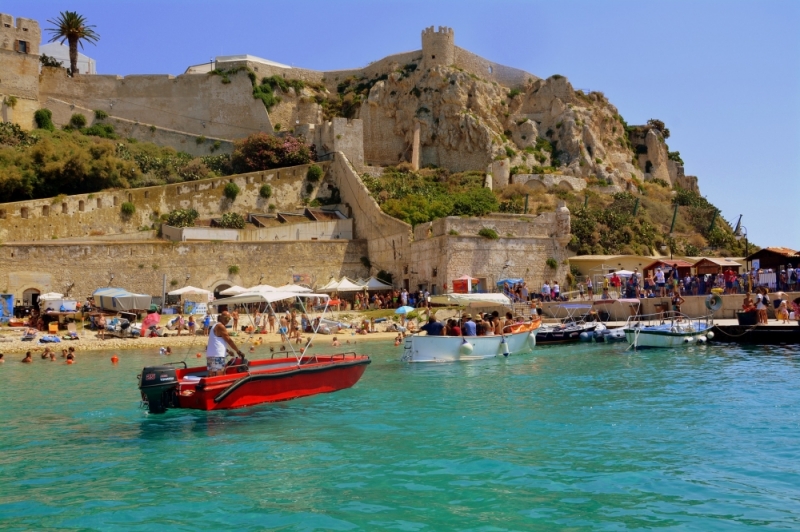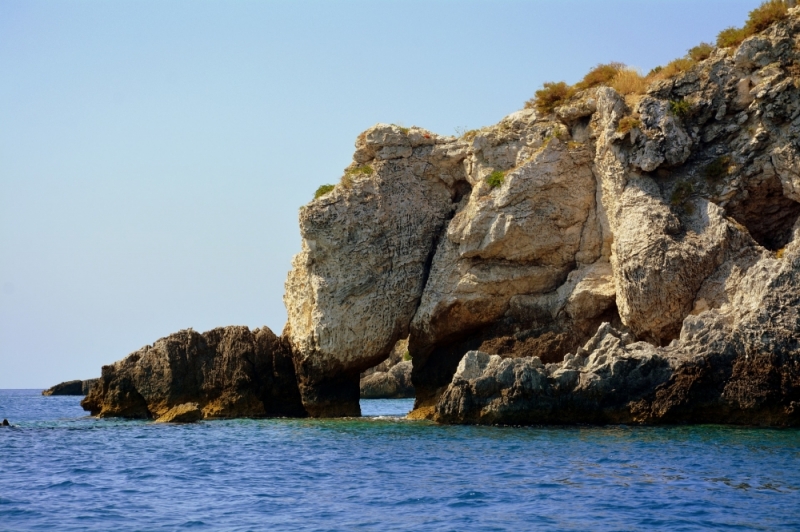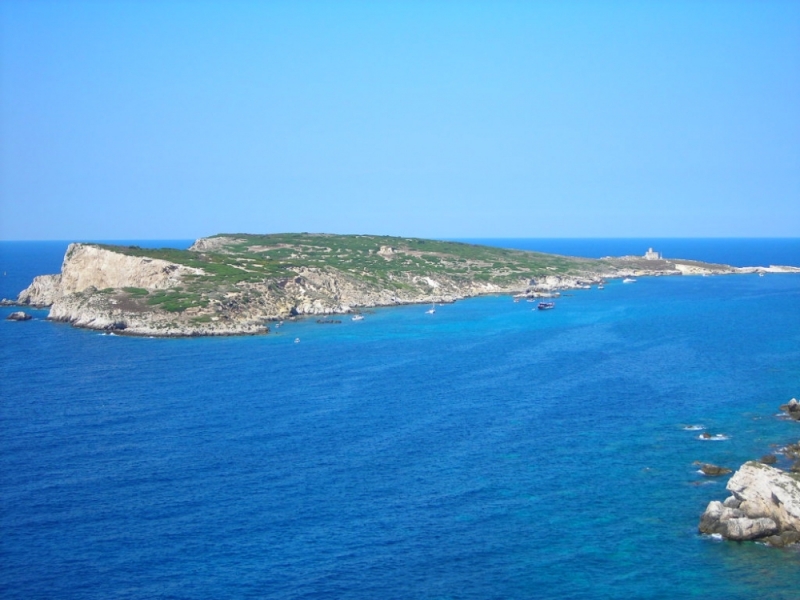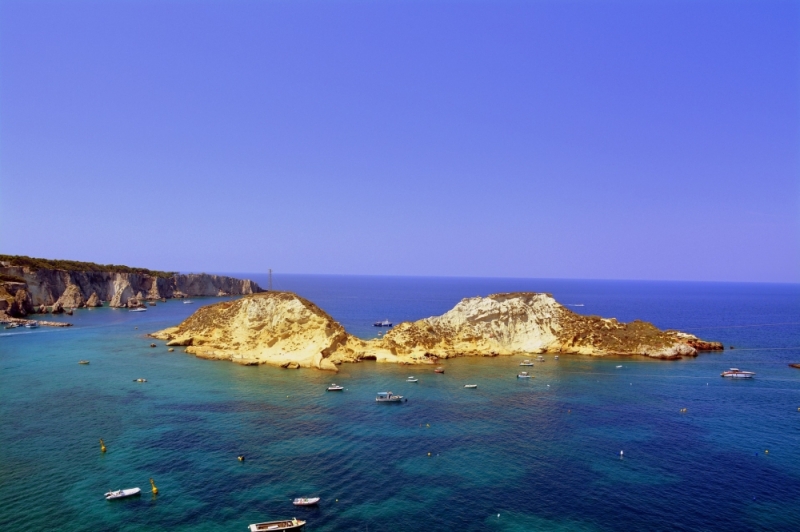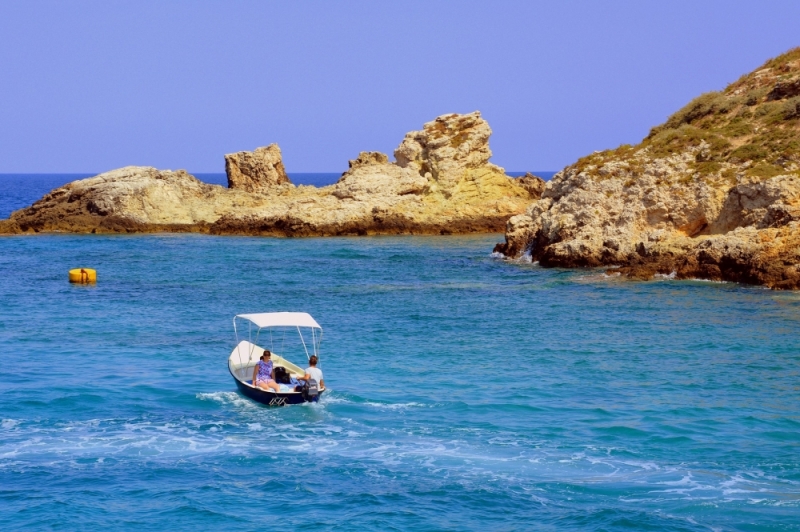The islands between Puglia and Molise
The Tremiti Islands are a group of islands located in the Adriatic Sea, off the coast of Puglia and Molise. The archipelago is made up of 6 islands, including Cretaccio and La Vecchia, rather than islands they can be defined as rocks. Of the remaining 4 islands, only San Nicola and San Domino are inhabited while the other 2, Capraia and Pianosa are completely uninhabited. From an administrative point of view, the islands are part of the Tremiti Islands Municipality which falls within the Province of Foggia and therefore in the Puglia Region. San Nicola is the main seat of the Municipality. The Tremiti islands appear to have been inhabited since the 4th century BC. C. and their name should date back to the Romans who called them Trimerus , i.e. Three Islands. Since they were quite isolated, the Ancient Romans used them as a place for exiles, something that, a few centuries later, the emperor Charlemagne also did. It was then King Ferdinand IV of Naples who transformed the Tremiti into a penal colony until the Murattians invaded the island during the Napoleonic period. As was done for the Pontine Islands, Ferdinand II of Bourbon sent, starting from 1843, fishermen from Ischia, with the intention of creating settlements on the Tremiti Islands and exploiting the abundance of fish in the Adriatic Sea. However, their function of confinement resumed after the Unification of Italy and during Fascism Mussolini sent his main opponents here, including the then future President of the Republic Sandro Pertini. Today the Tremiti Islands represent one of the major tourist centers in Puglia and are a magical place where you can stay. The clear waters of the sea that surrounds them have been awarded the Blue Flag several times, the most important recognition for coastal resorts.
St. Nicholas
San Nicola is the historical and administrative center of the Tremiti Islands. In fact, the first human settlements dating back to prehistoric times and also two tombs dating back to the Hellenic period were found here. However, the main monument on the island is certainly the Sanctuary of Santa Maria a Mare , an abbey, called the Montecassino del mare. In this monastery, during the Middle Ages Benedictine, Cistercian and even Lateran monks alternated. According to legend, the sanctuary was founded by a hermit who arrived in San Nicola in the third century AD who, following a vision of the Virgin Mary, built this temple in his honor, just as the Virgin had asked him to do. But the man was worried about his poverty and that of the land where he was, so the Virgin showed him a place to dig and where man found enormous wealth. Again according to legend, the point where the hermit dug was the tomb of Diomedes hero of the Trojan War written by Homer, which would be visitable today, as part of one of the two Hellenic tombs found on the island. Another fascinating monument on the Apulian island is the Tower of the Knights of the Crucifix , a sighting point to defend the island from external attacks. On the lintel of the tower there is a Latin inscription dating back to the Lateranense that reads "will break and crush those who cross the threshold". As for the landscapes, San Nicola does not disappoint. We advise you to admire the Grotto of San Michele , famous for the color of its blue and turquoise waters and for its front that looks like a skull. As for the beaches, there is the beautiful Castello beach which, being sheltered from the winds, has a calm sea. This beach is located near the port and in fact it will be the first beach you will come across when arriving in San Nicola. Then there is the Marinella beach , which is located near the San Nicola lighthouse and which we recommend you reach by sea because it is located at the end of a path that is not exactly accessible.
San Domino
San Domino is the largest of the Tremiti islands, as well as the main port of the archipelago and is located 200 meters from the island of San Nicola. In San Domino you will surely find a greater tourist offer than San Nicola, as it is here that most of the hotels in the Tremiti islands are present. Furthermore, while San Nicola is the historical capital, San Domino could be called the naturalistic capital of the islands, as it is full of caves, woods and marine protected areas. Rich in vegetation and with a beautiful pine forest composed mainly of Pines of Aleppo, on its territory there is also the typical vegetation of the Mediterranean scrub. Its rocks are rocky and jagged and open onto the sea in many small rocky coves, where the color of the sea goes from turquoise to blue to intense blue. Cala dei Benedittini is a beautiful rocky beach with a pristine sea and equipped for those who want to relax, those who want to rent rafts and also for snorkelers, as there is a diving center nearby. Not far away is Cala degli Inglesi , so called because on the seabed there is the wreck of an English ship. Cala Tonda is instead a beautiful cove, with a rounded shape, precisely, where the sea seems to become a pond. But the beaches of San Domino would be better to visit them by boat because some of them are quite difficult to reach. For example, Cala Matano , the beach dear to the Italian singer Lucio Dalla, can be reached through a steep road that crosses the pine forest and is overlooking the sea. Taking advantage of the possibility of renting a boat, you can also visit the many caves that make up the coast of San Domino. Among all, there is the Grotta del Bue Marino where the monk seals took refuge until 1958. Since then, however, no further sightings have been made. It is possible to enter the cave thanks to the kayaks and in its 70 meters of depth, the cave ends with a sandy stretch, completely in the dark, and it is here that the seals are believed to have sheltered. The coast of San Domino also offers beautiful works of art created by nature. There is, for example, the Elephant Rock , a rock that the sea and atmospheric agents have shaped over the centuries giving these rocks the shape of an elephant. Near the rock you can dive to admire the beautiful backdrop. Finally there is the beautiful Punta di Zio Cesare , in the south of the island, where, off the coast, there is the wreck of an ancient Roman ship. As for the walkers and nature lovers, although San Domino is a small island, you will not be bored on the many paths that cross it. We suggest you to start well equipped and well trained because the paths also develop uphill and to go from one end of the island to the other it takes about an hour. Tip: Always carry bottles of water with you, because there is a shortage of drinking water on the island.
Weather in Capraia
The island of Capraia is also called Caprara or Capperaia, for the large amount of caper plants present on the island. Unlike San Nicola and San Domino, Capraia is uninhabited and it is not possible to disembark. The only way to be able to "see" it is through organized boat tours that leave from the port of San Domino. Thanks to these tours, you can see the island from the sea and admire its wonderful coast, which has wonderful coves, such as Cala Sorrentino and Cala dei Turchi , or Punta dello Straccione , the southernmost part of the island, but also the Grottone and Punta Secca . These areas all belong to the Marine Protected Area of the Tremiti Islands and it is possible to dive, in some points, even up to a depth of 60 meters. If you decide to dive, waiting for you on the seabed you will find a wonderful statue of Padre Pio , about 3 meters high, made by the sculptor from Foggia Domenico Norcia and installed on the backdrop of Capraia on October 3, 1998, followed by a procession on boats.
Pianosa
If we exclude the islets of Cretaccio and La Vecchia, Pianosa is the smallest island in the Tremiti archipelago. Also uninhabited like Capraia, Pianosa is the most distant island and having no reliefs, it is often submerged almost completely completely during storm surges. Even in Pianosa there is a ban on disembarking and you cannot even sail, fish or dive within 500 meters of the coast, as the island is part of the Tremiti Islands Integral Marine Reserve and Gargano National Park . In fact, for its seabed, for its flora which, although scarce, consists mainly of Mediterranean scrub and for its fauna which includes octopuses, moray eels, amberjacks, snappers but also birds such as the oxen major and the queen's falcon, Pianosa it is considered of strategic importance for the conservation of its uncontaminated environments and of its marine fauna which includes numerous fish species of great importance.
Il Cretaccio and La Vecchia
Il Cretaccio is located halfway between San Nicola and San Domino. For its scarce vegetation and for the corrosion caused by atmospheric agents, more than a minor island, Il Cretaccio is often considered the largest rock of the Tremiti islands. The only human settlement on the rock is the Benedictine pier , dating back to when the monks resided in the monastery on the island of San Nicola. As in Pianosa, it is not possible to disembark at the Cretaccio which is also uninhabited, except on stormy nights when, according to a legend, you can see the ghost of a man who was executed right here, by beheading. In fact, it is said that the ghost wanders during stormy nights with his head in his hands. La Vecchia is also a black rock, slightly smaller than Cretaccio and it too is steeped in legend, as it is said that it was inhabited by an old witch and its name derives from this adjective.
Movida and entertainment
Although small, the Tremiti islands offer a lot of fun. In the archipelago there are 3 discos, the Furmicula, the Diomede and the Club of Suffering, which are open only during the summer season, from May to October. Even though those who come to the Tremiti do it mainly to relax and enjoy a relaxing holiday in the midst of wild landscapes and so much tranquility, far from the chaos of the city. For this, we recommend a walk between the villages of San Domino and San Nicola where, in the squares, you will always find bars that offer live music to listen to perhaps sitting at the table in front of a good glass of wine. There are also many excursions to do: by boat, on foot, but also equipped with a mask and snorkel for snorkeling, or with cylinders for those who want to dive. On the islands there are 7 diving centers and it is also possible to rent canoes and bicycles.
Climate, curiosity and advice
Climate: Obviously, the best months to visit the Tremiti are those that go from May to October. Yes, because from late spring to the beginning of autumn the Mediterranean climate that characterizes the Tremiti will allow you to visit the islets enjoying wonderful sunny days, sometimes characterized by winds coming from the east. Moreover, it is known that Puglia is windy.
Curiosity: There are many legends that narrate the birth of these islands, but the most beautiful is certainly the one concerning the Trojan hero Diomedes (who also gives the name to the solos, sometimes called the Diomedee Islands as well as Tremiti). It is said that here the young hero retired after escaping from Troy, together with his companions and that when he died, Venus, the goddess of love, transformed all his companions into birds, the Diomedees, so that they could guard the tomb of the 'hero. Another more recent curiosity is that the Italian singer Lucio Dalla often resided here, who took refuge in his villa in Via Domenico Sputo in San Domino and wrote his songs. It seems that right here he composed the unforgettable "Piazza Grande".
Tips: Remember to pack, in addition to the costume and sunscreen, also the shoes to explore the paths and mask and snorkel to explore the seabed.


